Input Settings
With input settings, you can set the values needed to run the project properly.
Changing them while the project is running won't apply until you restart.
How do you add "Input Settings" to a project?
Via the context menu: Add action → Project → Input settings.
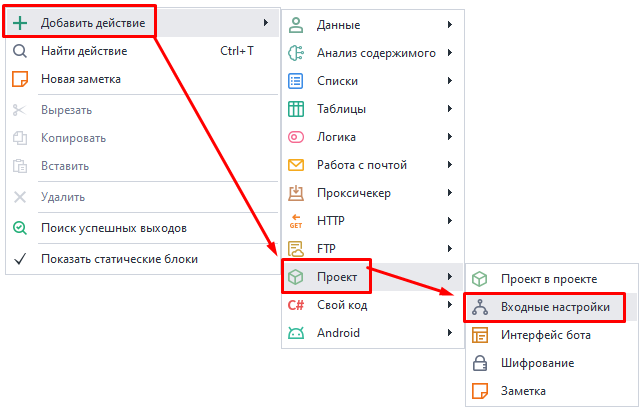
Or through the Static Blocks Panel:
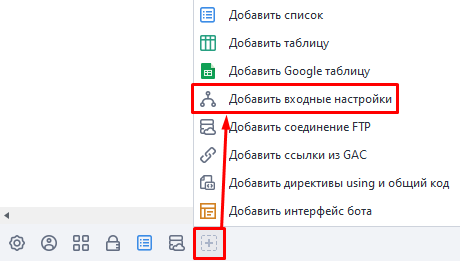
The corresponding icon will appear on the panel.
So if you add one, the other is immediately removed from the project. Be careful and save your settings beforehand.
Editing input parameters.
Available fields:
Name.
This is where you give a name to the setting you're creating.
Type.
Different data types are supported. They decide what kind of info a user can enter, and also how the setting appears visually.
Below, in a separate section, we'll go over each one in detail.
Default value.
The initial value for the parameter. When the project starts, it'll also be in the project variable.
Save to variable.
The variable name where the value will be stored.
Hint.
A reference note about the setting. This shows up as a tooltip.
Buttons on the right.
Preview.
The "Magnifier" icon lets you check what the settings you've created will look like at any time.
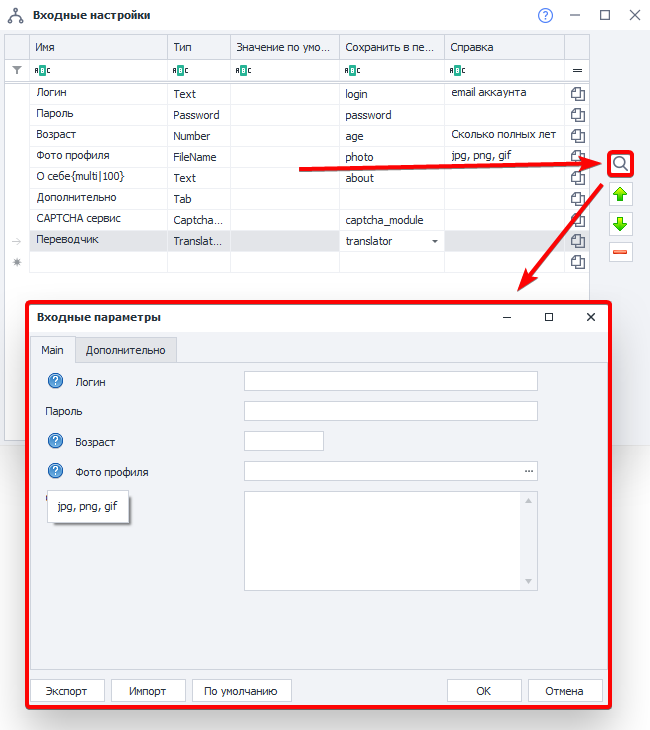
Move settings up and down.
To move a setting higher or lower in the list, select it and use the arrows.

Delete a setting.
To delete, just select a setting and click the minus button.
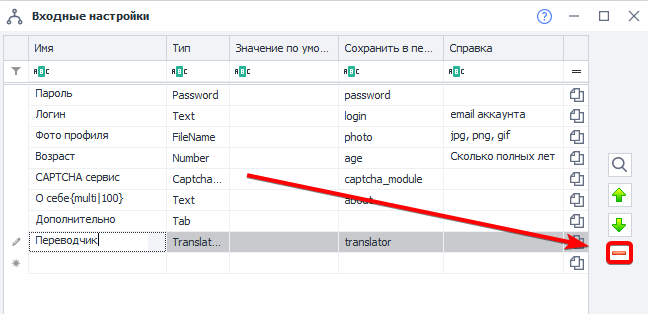
Copy variable macro.
To copy the macro to the clipboard, click on the file icon on the right.
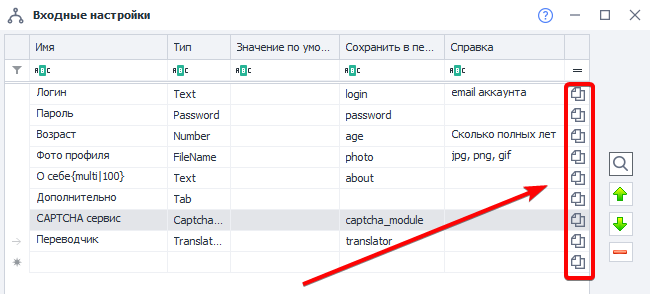
Preview buttons.
Export.
Lets you save the current settings to a file.
Import.
Allows you to load settings from a file that you previously saved.
Default.
Resets settings to their default values.
Available parameter types.
Label.
Heading. Used for visually splitting up logical sections.
Boolean.
Checkbox. It's either checked or not (True or False).
Number.
Field for an integer.
Text.
Text field.
Single-line text.
Used by default.
Multi-line text.
To insert multi-line text, add an extra option to the name: {multi|height}, where height is the field height in pixels.
Select.
A button group that lets you pick from several options. Set all possible options in the parameter name, for example: {HTTP|SOCKS4|SOCKS5}.
FileName.
Input field for specifying a file path or directory in the file system. You can type it in or use the file picker window by clicking the […] button.
Available options:
Open file.
Opens a window to choose an existing file. This is the default behavior.
Save file.
Saves the result to a file. To call this option, add {save} to the setting name.
While the "Open file" option only works with existing files.
Directory path.
To work with a folder, add {folder} to the parameter name.
Dropdown.
Dropdown list for selecting a value. 2 options available:
Show items "As is".
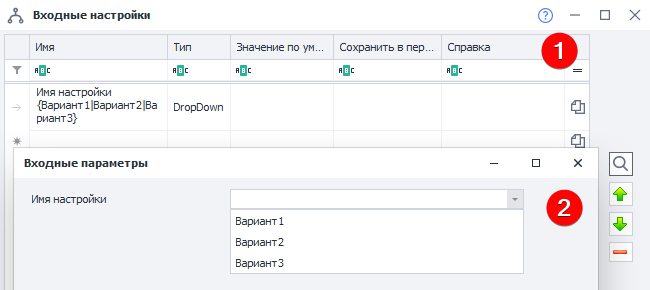
Options in the dropdown will appear just like in the settings editor. Syntax: Setting name {Option1|Option2|Option3}.
Named items.
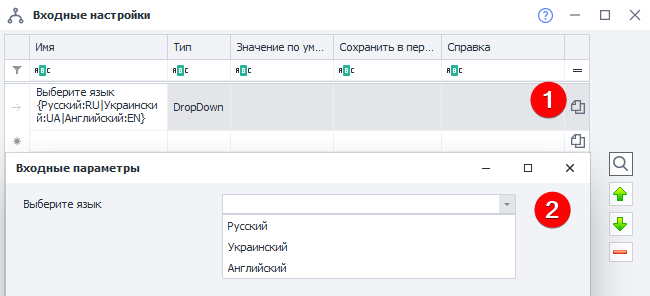
Syntax: Setting name {Option1:Value1|Option2:Value2|Option3:Value3}.
Option is what's visible to the user.
Value is what gets stored in the variable.
DropDownMultiSelect.
Dropdown with multiple selection. Lets you tick several options at once.
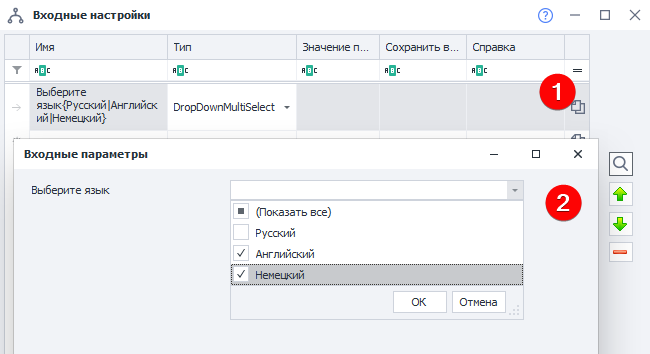
You can put several default values separated by commas in the Default values field. The syntax is the same as DropDown. If several options are chosen, they'll be saved to the variable separated by commas.
SmsServices.
Select a service for receiving SMS from a list of available ones.
TranslateServices.
Select a text translation service from the list of available ones.
Tab.
Add another tab to the settings window. For example, you can split "Main" and "Additional settings" into tabs.
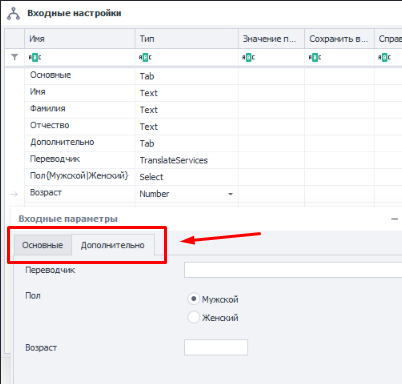
Comment.
A field that lets you insert text across the whole settings window width. Can be used as a description or comment for other settings.
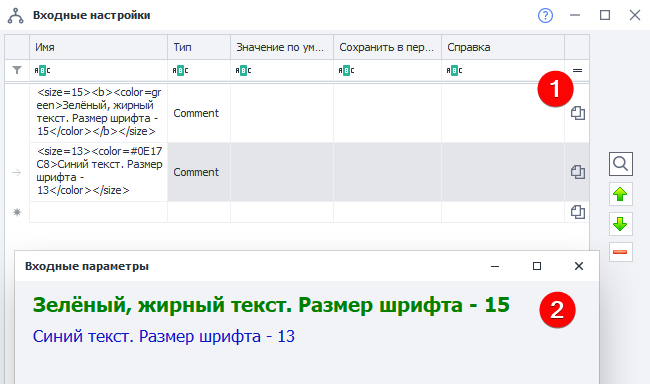
You can format the displayed text in this field. Supported tags:
| Feature | Syntax |
|---|---|
| Bold text | <b>Text</b> |
| Font color | <color=red>Red font color</color> |
| Font size | <size=6>Text size</size> |
- First line:
<size=15><b><color=green>Green, bold text. Font size - 15</color></b></size> - Second line:
<size=13><color=#0E17C8>Blue text. Font size - 13</color></size>
Password.
Anything entered here is hidden from view. But it will be visible inside the project!
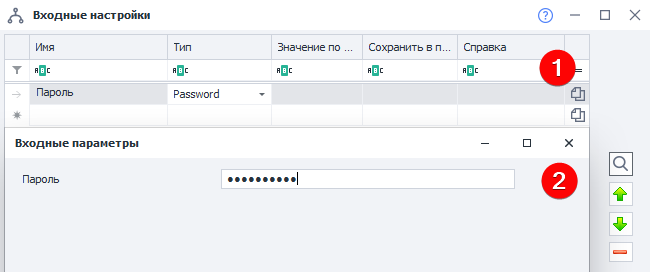
You can use Unicode symbols in any field. For example — ± ♻ 📞 💙 🚢. Even though the browser shows them in color, in the program's settings they'll be black and white.
Overview of input settings in ZennoDroid.
You can open input settings in ZD by right-clicking on a project in the list → Settings. Or just double-click it.
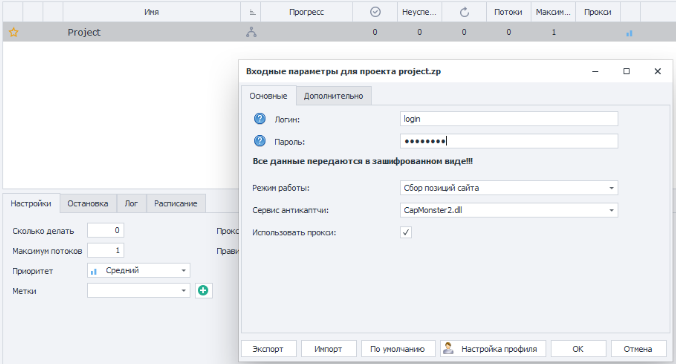
And you get this kind of simple and clear input settings interface. Now you can share the project with another user.